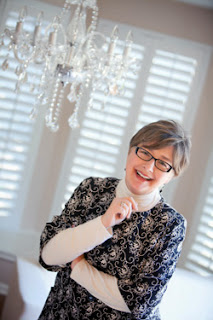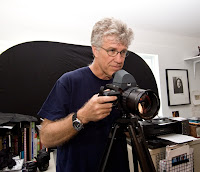 Debbie
Riggs, owner of Pure Photography in Abilene, Texas, is a professional
photographer specializing in children and family portraits. We felt her expertise made her the
perfect person to turn to for advice regarding family photos. We asked Debbie for a few tips to make
the most of this year’s Thanksgiving gathering. Here are a few of her favorite quick tips:
Debbie
Riggs, owner of Pure Photography in Abilene, Texas, is a professional
photographer specializing in children and family portraits. We felt her expertise made her the
perfect person to turn to for advice regarding family photos. We asked Debbie for a few tips to make
the most of this year’s Thanksgiving gathering. Here are a few of her favorite quick tips:Pic of the Day
Sunday, November 3, 2013
Thanksgiving Photo Tips from Debbie Riggs of Pure Photography
 Debbie
Riggs, owner of Pure Photography in Abilene, Texas, is a professional
photographer specializing in children and family portraits. We felt her expertise made her the
perfect person to turn to for advice regarding family photos. We asked Debbie for a few tips to make
the most of this year’s Thanksgiving gathering. Here are a few of her favorite quick tips:
Debbie
Riggs, owner of Pure Photography in Abilene, Texas, is a professional
photographer specializing in children and family portraits. We felt her expertise made her the
perfect person to turn to for advice regarding family photos. We asked Debbie for a few tips to make
the most of this year’s Thanksgiving gathering. Here are a few of her favorite quick tips:Saturday, July 6, 2013
Kickstarter 101: What it Takes to Fund a Photography Project
Thursday, June 7, 2012
Chris Christensen, Founder of The Amateur Traveler
 Chris employs a number of strategies to fit his passion for
travel and photography around his full-time career. Tight budgeting of his time and bringing his son in as an
audio-editing expert for his podcasts are two successful strategies. Sometimes, unfortunately, there just
isn’t enough time to fit everything in and this means having to turn down
trips. “I turned down fee trips to
Jamaica, Hong Kong and a two week Alaskan cruise last year. It was not that I
didn’t want to go on these adventures, but just did not have the time.” Still, Chris fits in an
impressive number of trips in his schedule each year, often opting for longer
weekend travels with his wife. He
also keeps himself to strict deadlines, which helps him make the most of his
time. He quips, “Oh, and did I
mention it helps if you don’t need to sleep much?”
Chris employs a number of strategies to fit his passion for
travel and photography around his full-time career. Tight budgeting of his time and bringing his son in as an
audio-editing expert for his podcasts are two successful strategies. Sometimes, unfortunately, there just
isn’t enough time to fit everything in and this means having to turn down
trips. “I turned down fee trips to
Jamaica, Hong Kong and a two week Alaskan cruise last year. It was not that I
didn’t want to go on these adventures, but just did not have the time.” Still, Chris fits in an
impressive number of trips in his schedule each year, often opting for longer
weekend travels with his wife. He
also keeps himself to strict deadlines, which helps him make the most of his
time. He quips, “Oh, and did I
mention it helps if you don’t need to sleep much?” Tuesday, February 28, 2012
The Working Photographer:
Laura Wooten on the Importance of Presentation, Timing & Connection
by Laura Oles
Laura Wooten is an award-winning professional photographer whose career path started as teen when she joined her high school yearbook staff and her father placed a completely manual Nikon FM2n in her hands. Under his care and guidance, Laura’s talent flourished and she soon found herself completing a photography degree in college and working as a photojournalist for major Texas newspapers and as a freelancer for the Associated Press.
Today, Laura has leveraged her considerable skills and has established a successful portrait studio specializing in wedding, portraiture and on-location photography. We asked her what she wished she had known when she was in the early stages of launching her portrait studio.
Laura was generous with her advice, happy to help others dreaming of one day becoming members of the profession. “I wish I had realized early on how important presentation is when working with clients. I started off with a ‘sell online’ strategy, in part, because it was easy and it made sense with the advent of digital technology. What I didn’t understand is that putting portraits online meant that the customer now owned the image in her mind. She was free to share my work--disabling the right-click function doesn’t protect your images--and could show friends and family the final product. I had invested a substantial amount of time and energy and the customer hadn’t invested a dime.”
Digital photography’s convenience can be a double-edged sword, especially for professionals working hard to be properly compensated for their craft. For Laura, the solution evolved from a sincere desire to properly showcase her work while providing a heightened quality experience for each client.
Laura’s desire to provide a stellar customer experience and to separate her offerings from the plethora of ‘shoot and burn’ photographers have catapulted her studio to a new level of success as well as a steady stream of client referrals.
Laura still provides digital images but her strategy is stronger now, in part, because of presentation and timing. “Once the client has finished ordering, I’ll write a blog entry about their session and include a few images as well as place the same information and images from their portrait session on my Facebook page. This allows the client to share the images while also helping to drive traffic to my website. It’s a solution that benefits everyone involved, and the feedback I receive from clients is incredible.”
Tuesday, October 11, 2011
Halloween Photo Contest


Wednesday, July 6, 2011
Thinking Outside the (Doug) Box:
The Professional Photographer Who Mentors Beginning Shooters
by Laura Oles
When it comes to being a working professional photographer, Doug Box has experience to spare. In addition to shooting countless weddings and portraits, he has taught photography in forty-eight states, in eight counties and on five cruise ships. Needless to say, Doug Box is busy. And he tells us that he wouldn’t have it any other way.
“Each week is different for me,” Doug says. “I spent all last week teaching, but I still need to keep up with clients and return calls when I’m on the road. Now I’m back and getting ready to shoot a wedding. I like the variety. I like that I’m in a position to do a number of things.”
And according to Doug, being a professional photographer today—and being one that can make a living at it--requires the ability to handle a number of different tasks and projects. “Being a niche photographer is far more difficult today than it was twenty years ago. People’s expectations have changed and what they want has changed also.”
One of the things that Doug has embraced is being a teacher and mentor to new photographers who want to learn and become better behind the camera. “Today’s technology has made some things easier and other things more difficult. Learning things such as how to properly expose an image digitally is a skill that has mystified many people. My goal is go take the mystery out of it.” In fact, Doug is so passionate about teaching newbies that he recently purchased an online forum called Prophotogs.com. There are currently 700-800 photographers online searching for help and guidance. “One of the things I do is post quick video critiques to give people concrete feedback on the images they submit for review. Just telling someone that the image looks good isn’t helpful. They need specific direction on what works, what doesn’t, and why.”
Doug feels a real connection with beginning photographers because “all the pros were once beginners.” When asked what are the most important things beginning photographers need to know, Doug provided a few recommendations sure to take starting shooters to the next level:
Learn How ISO, F/Stop and Shutter Speed Work Together: These items are the three pillars of proper exposure. “This can be one of the most confusing things for beginners to learn but it is critical to have this foundation before tackling other subjects. The rest of your skill set is built upon this base.” Doug says that he and good friend (and fellow pro photographer) Randy Kerr realized that it was much easier for them to learn these basics when they were shooting film. “When we were getting started, all of these settings were shown on our camera lens and we could visually see the relationship between them because we looked at it every day. With digital, you just see the settings on the back of the LCD screen. You don’t see how one change affects the other settings. That’s part of what makes it more confusing today.”
It was this realization that led he and Randy to create the Exposure Calculator (which can be found at www.dougbox.com/shop/) This specialized card has dials that allow you to adjust one aspect of your image (F/stop, shutter speed or ISO) and see how this change affects the other settings. “I’ve seen the light go on with so many people after using this tool for a little bit. It jus helps them understand the relationship.”
Learn How to Set a Custom White Balance: Along with proper exposure, Doug feels this is important because it affects a fair percentage of total photographs taken. “Learning how to set a custom white balance for your photographs and learning how to use the presets on your camera will make a substantial impact on the quality of your photographs,” Doug offers. “Take a look at what light is on your subject. You need to be able to make adjustments.”
Learn about Metering: “So many people use their in camera metering and I think they really need to learn how to use an handheld meter. When a camera sees white, it’s trying to calibrate to grey, and when this happens, your images can end up underexposed and it can make the snow appear grey. Likewise, when your camera sees black, it thinks the color is grey and tries to correct it, which means your images can become overexposed. Learning how to spot meter and evaluative meter can help you overcome your camera’s assumptions. You have to be smarter than your camera.”
Thursday, June 2, 2011
Inside the Life of a Working Photographer: Kirk Tuck Shares His Story


